Therapist Statistics: Therapist refers to quantitative data that is collected and analyzed about therapists and the therapy process. Statistical data on therapists worldwide can provide valuable insights into the effectiveness of therapy.
This Therapist’s statistics can help you to decide how to improve the therapy process, develop new therapeutic interventions, and identify areas where more research is needed.
With the ability to improve or transform people’s lives, many people find a career as a therapist highly rewarding. There are different types of therapists providing health services to individuals worldwide. The most common types.
The Global Compression Therapy Market size is expected to be worth around USD 7.3 Billion by 2033, from USD 4.1 Billion in 2023, growing at a CAGR of 5.9% during the forecast period from 2024 to 2033.
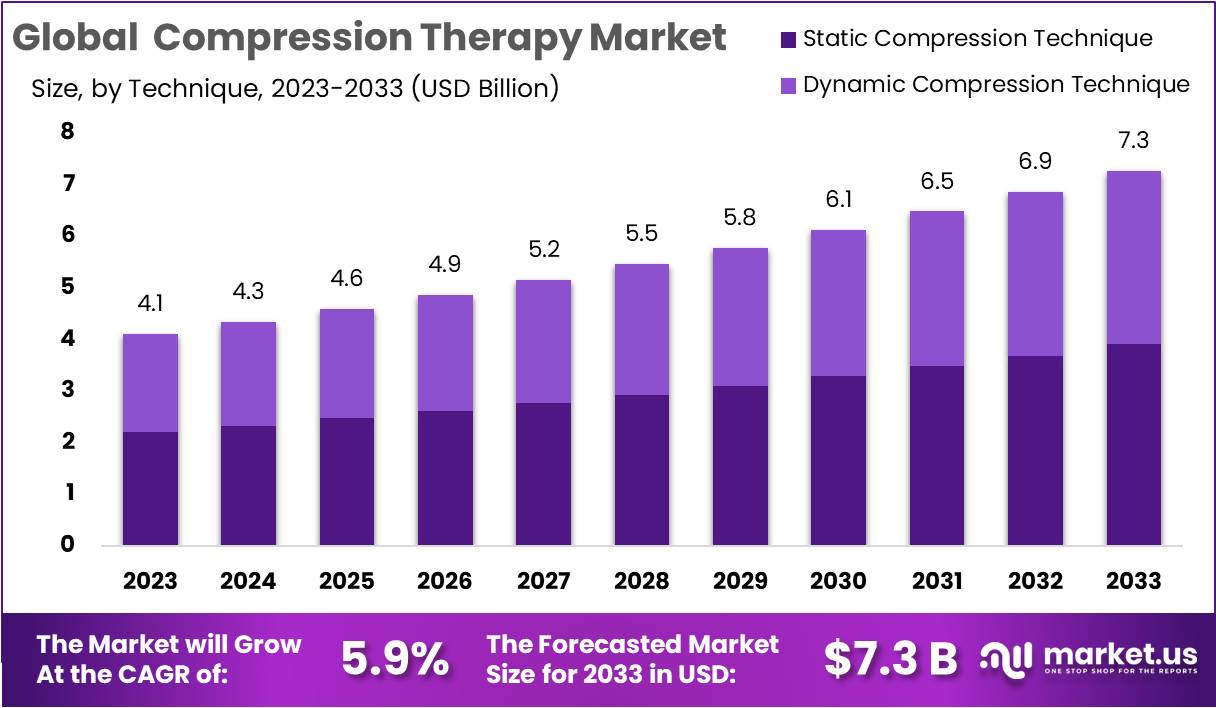
Table of Contents
- Types of Therapists:
- Therapist Present in the U.S Statistics
- By Ethnicity
- Therapist Statistics By Age Breakdown
- Sectors Therapists Work Statistics
- By Marriage and Family
- Psychodynamic Therapist Statistics
- Physical Therapist Statistics
- Psychologist in the US
- Depressive Disorders Worldwide
- Psychotic Disorders Worldwide
- Anxiety-Related Sleep Disorder
- Mental Health Disorder
- Respiratory Therapist Statistics
- ABA(Applied Behavioral Analysis) Therapy
- Impact of COVID-19 on Therapist Statistics
- Recent Developments
- Wrap Up
- FAQs
Types of Therapists:
- Marriage and family counselor
- Addiction therapist
- Behavioral therapist
- Divorce therapist
- Child Therapist
- Clinical therapist
- Cognitive therapist
- Cognitive-behavioral therapist
- Eating disorder therapist
- Exercise Therapist
- Youth therapists
- Social work therapist
- School therapist
- Trauma therapist
- Nutritional therapist
- Social therapist
- Dialectical behavior therapist
- Psychodynamic therapist
Therapist Present in the U.S Statistics
- There are more than 192,497 therapists are currently employed in the United States.
- There are 75.6% of therapists are women.
- 24.4% of therapists are men.
- 81% of therapists are more likely to work at private companies in comparison to public companies.
(Source: crossrivertherapy)
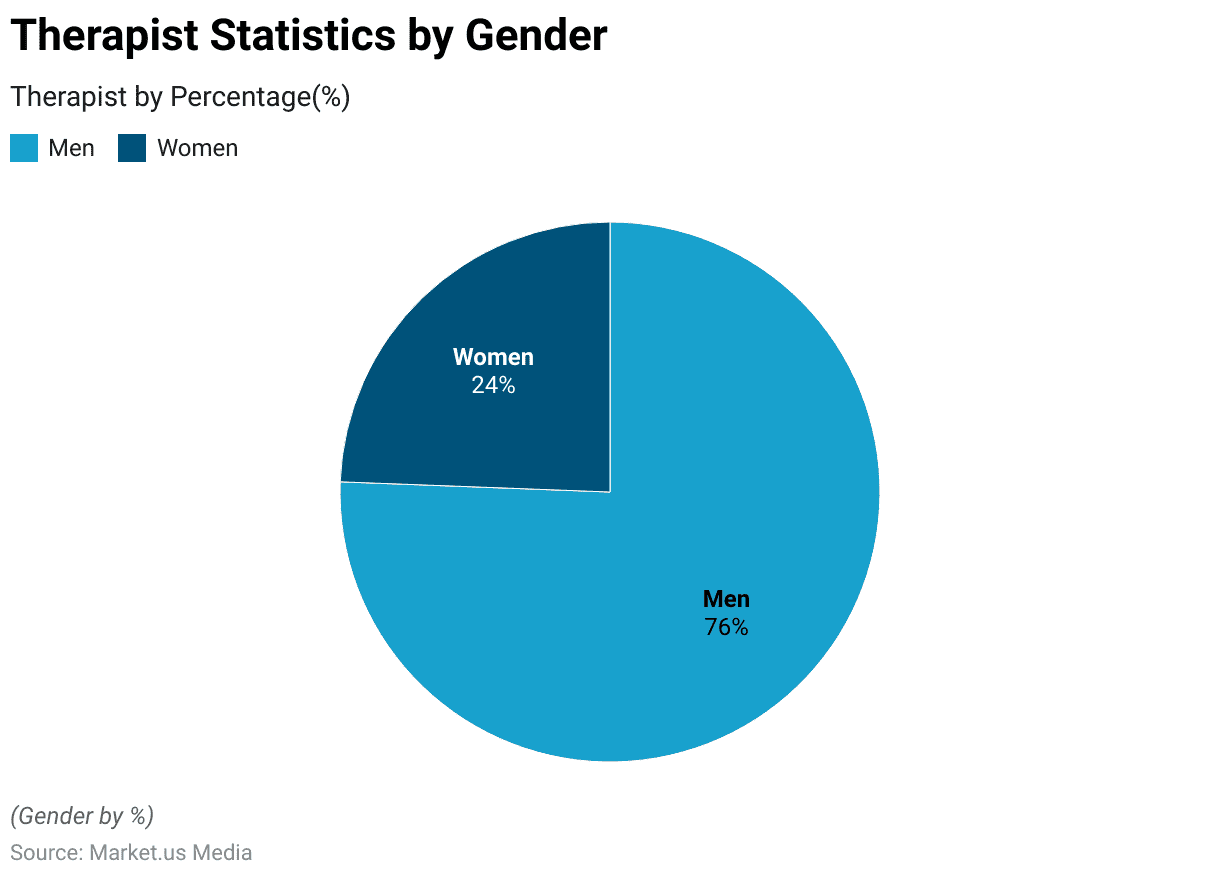
By Ethnicity
- There are 76.4% of therapists are white.
- 10.6% of therapists are Asian.
- There are 6.3% of therapists are Hispanic or Latino.
- Black or African American therapists are 4.1%
- 2.2% of therapists are unknown.
- 0.4% of therapists are American Indian and Alaska Native.
(Source: crossrivertherapy)
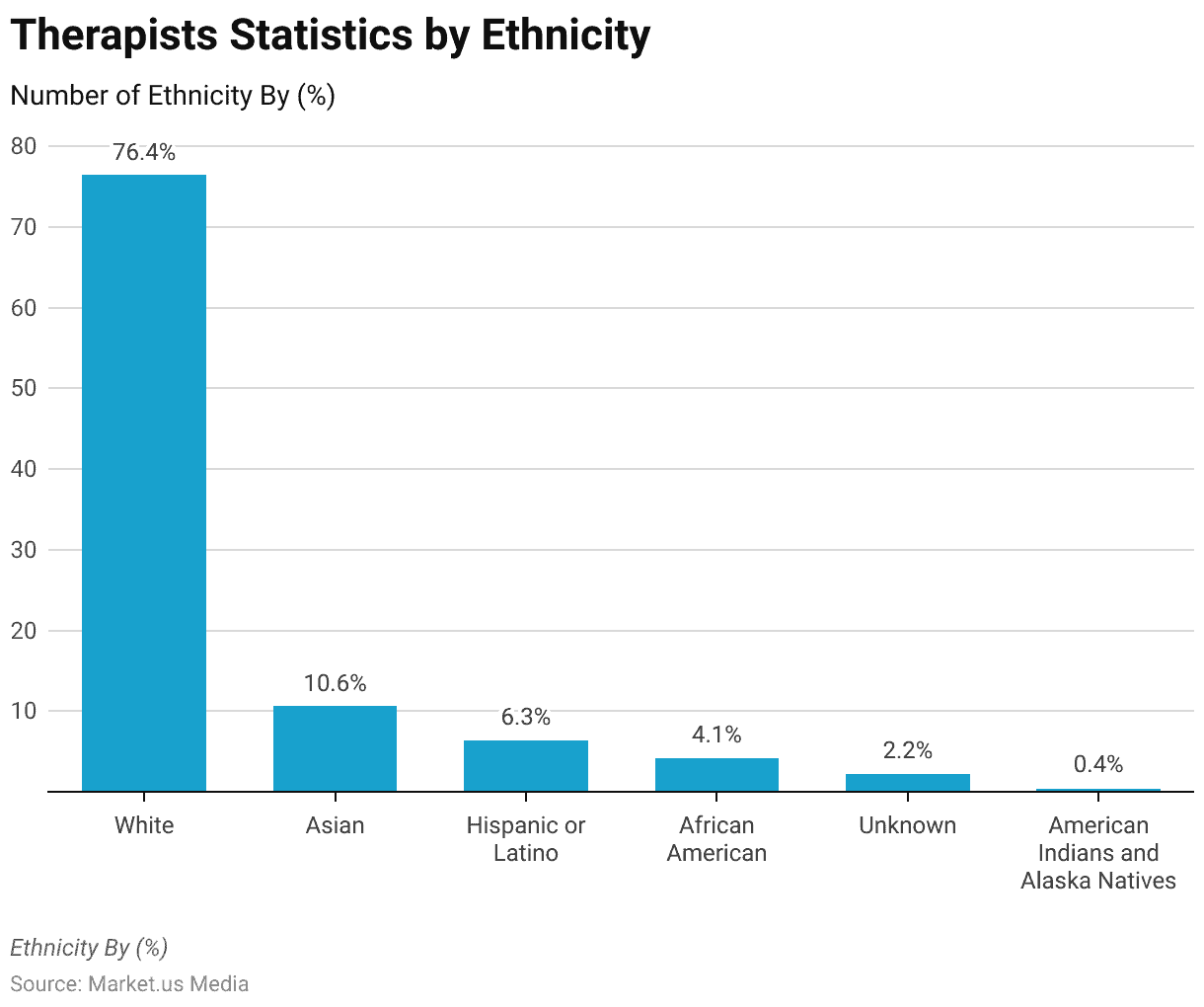
Therapist Statistics By Age Breakdown
- More than 52% of therapists are at least 40 years old.
- 34% of therapists are between the age of 30 to 40 years.
- There 14% of therapists are 20-30 years old.
(Source: crossrivertherapy)

Degree Level of Therapist Statistics
- 47% of therapists have a bachelor’s degree.
- 42% of therapists have master’s degrees.
- 6% of therapists have an associate degree.
- 2% of therapists have a doctorate.
- 3% of therapists have other degrees.
(Source: crossrivertherapy)
| Therapists Degree | Percentage |
| Bachelor’s | 47% |
| Master’s | 42% |
| Associate | 6% |
| Doctorate | 2% |
| Other Degrees | 3% |
Prevalence of Mental Illness Therapist Statistics
Mental illness is the most common problem among people worldwide. Some age groups experience more mental illness than others.
It is estimated that the number of women suffering from mental illness is more than men. In the United States, the prevalence of mental illness in the past year is more common among females than males.
- 44.7 million Americans struggled with mental illness in the year 2022.
- In 2021, 1.2% of US men received mental health treatment or counseling.
- Of the majority of US adults not receiving mental health services, a total of 43% could not afford the cost of treatment.
- In 2020, there were 12,275 registered mental health treatment facilities in the US, within those, 9,634 were less than 24-hour outpatient facilities while 1,806 facilities were 24-hour inpatient facilities.
- Around 27% of females reported some type of mental illness in the year 2022 as compared to 18% of males.
- Around 8.1% of female respondents and 7.2% of male respondents in the United States reported having suffered from co-occurring mental illness and substance disorder in the past year 2022.
(Source: Statista)
The United States Mental Health Issues Therapists Statistics
Mental health issues are much like other health issues that can be mild but can also be life-altering, affecting the emotional, social, and psychological well-being of the person. The common types of illnesses include mood disorders, anxiety disorders, eating disorders, and personality disorders.
- In 2022, it was estimated that around 34% of those in the US aged 18-25 years suffered from some form of mental illness.
- 28% of those aged 26-49 years suffered from some form of mental illness.
How Common is Depression in the United States?
- Depression is one of the most common disorders in the United States.
- Around 8.3% of US adults reported a major depressive episode in the last year 2022.
- 75% of women aged 18-20 reported major depressive episodes in 2022 compared to 8.6% of women aged 40-44 years.
- Around 32% of those in the US with a major depressive episode in the past year had serious thoughts of suicide compared to just 2% of those who did not have any major depressive episode.
(Source: Statista)
Mental Health Treatment in the United States Statistics
Treatment of mental health issues can come in many different forms and depend on the type of issues and severity of disorders. The common treatment methods include behavioral therapy, psychotherapy, and support groups.
- In 2021, around 50% of respondents in the United States with a major depressive episode reported they received treatment from a general family doctor.
- 43% of adults in the United States said that they do not receive mental health services.
- 35% of adults said that they did not know where to go for such services.
(Source: Statista)
Sectors Therapists Work Statistics
- 5% of therapists work in the education sector.
- 8% of therapists work in the public sector.
- 81% of therapists work in the private sector.
- 7% of therapists work in the government sector.
(Source: crossrivertherapy)
| Company Type | Percentage |
| Education | 5% |
| Public | 8% |
| Private | 81% |
| Government | 7% |
By Marriage and Family
- There are more than 120,431 marriage and family therapists currently employed in the United States.
- 75.7% of marriage and family therapists are women.
- 24.3% of therapists are men.
- The average age of family and marriage therapists is 40 years old.
- Marriage and family therapists made a median salary of USD 49,880 in 2021.
- 49% of individuals reported that they go to counseling with their partner.
- 52% of individuals had never tried marriage counseling.
(Source: crossrivertherapy, couplesacademy)
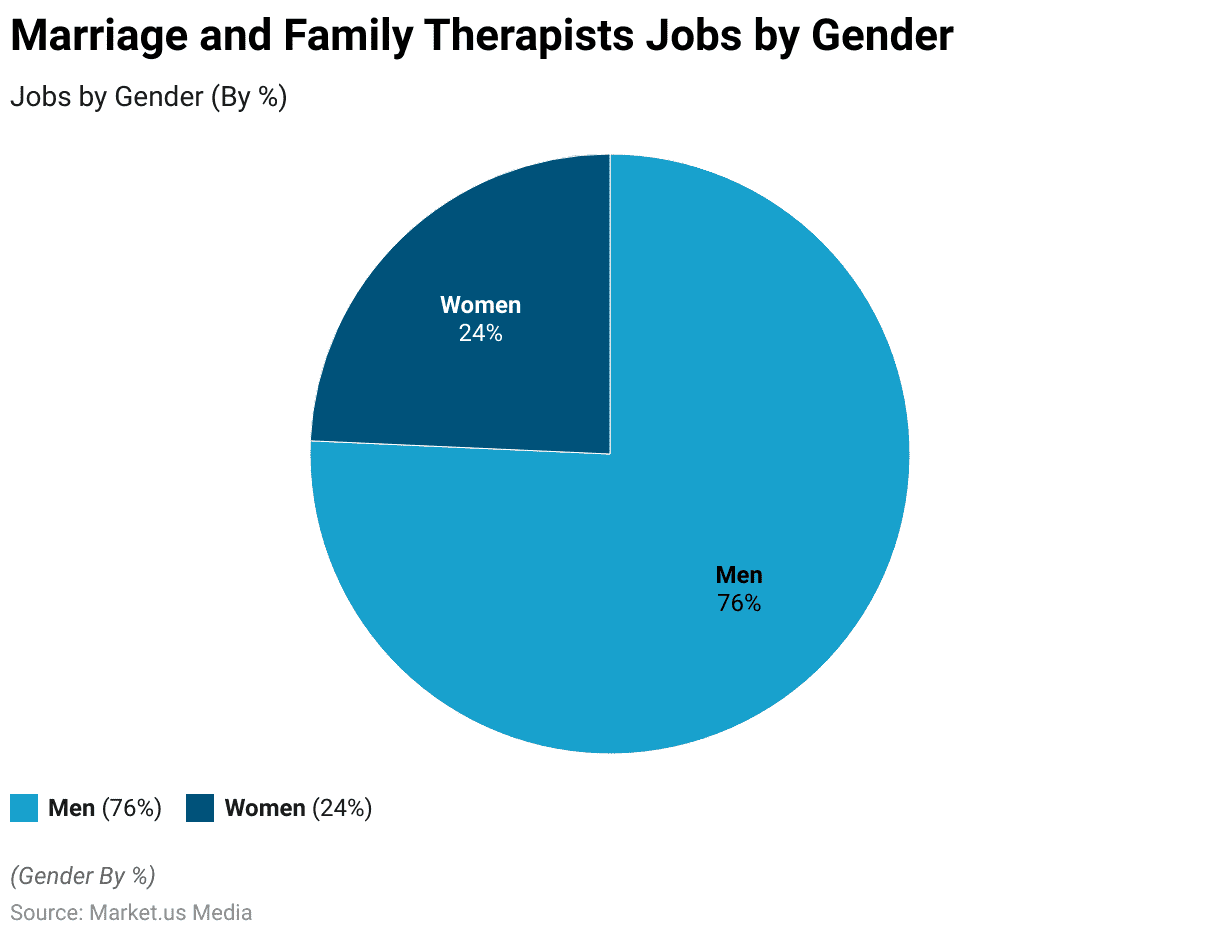
Psychodynamic Therapist Statistics
Emotional disorders are the most common reason for children and young people to access mental health services. Emotional disorders are common in children.
- In the UK 8.1% of children aged between 5-19 years have an emotional disorder.
- The rate of emotional disorders is higher in girls which is more than 10% than the boys.
- 2.1% of young adults aged from 5-19 years are diagnosed with depression.
- 4.6% of young adults get treatment for mental illness.
(Source: frontiersin)
Physical Therapist Statistics
- There are 312,716 licensed physical therapists in the US.
- There are currently 38,800 physical therapy clinics in the US.
- The salary of the average physical therapist is USD 95,620.
- Globally there are 1,600,606 registered physical therapists.
- The US physical therapy industry was valued at USD 46.4 billion in 2022 and the industry is driving with a CAGR of 3.4%.
- Over 300 million physical therapy sessions are estimated to be carried out each year in the US.
(Source: thegoodbody)
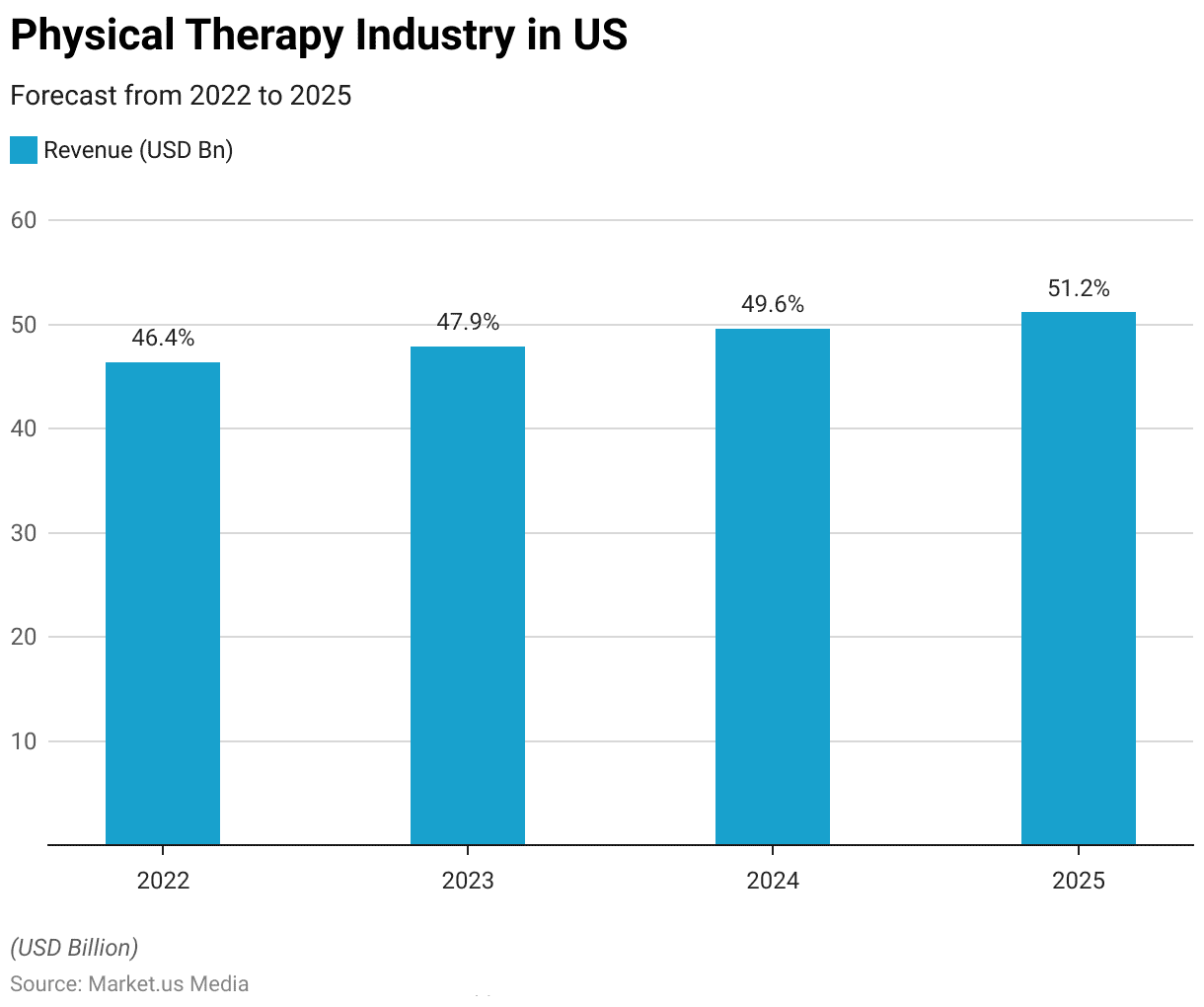
Psychologist in the US
- There are more than 63,579 psychologists currently employed in the United States.
- 64.8% of psychologists are women and 35.2% of psychologists are men.
- 43% of psychologists are working in private companies.
- 36% of psychologists are working in the education sector.
- 19% of psychologists are working in the government sector.
(Source: zippia)
Depressive Disorders Worldwide
- The revenue in the depressive disorder segment is projected to reach USD 11.97 billion in 2023.
- The revenue is expected to show a compound annual growth rate (CAGR 2023-2027) of 1.91%, and the market is expected to grow at a revenue of USD 12.91 billion by 2027.
- Most of the revenue is generated in the United States. (USD 6,314.0 million in 2023).
(Source: Statista)
Psychotic Disorders Worldwide
Psychotic disorders are severe mental health disorders that cause changes in a person’s way of thinking. The market values represent the revenue generated.
- The psychotic disorder segment accounted for revenue of USD 3.65 billion in 2023.
- The revenue is expected to show a CAGR of 0.77%.
- The market is expected to reach USD 3.76 billion in 2027.
- Most of the revenue was generated in the United States which is about USD 2,289.0 million in 2023.
(Source: Statista)
Anxiety-Related Sleep Disorder
- The revenue of the anxiety-related sleep disorder segment is expected to reach USD 4.47 billion in 2023.
- Revenue is expected to grow at a CAGR of 0.37%.
- The revenue is expected to reach USD 4.54 billion by 2027.
- In global comparison, most of the revenue was generated in the United States of USD 2,843 million in 2023.
(Source: Statista)
Mental Health Disorder
The following are the most recent statistics on mental health disorder issues.
- 1% of Americans are affected by schizophrenia.
- About 18% of people ages 18-54 have anxiety disorder.
(Source: Statista)
Respiratory Therapist Statistics
- The median annual pay for respiratory therapists is approx. USD 61,830.
- There are about 135,800 respiratory therapists are currently employed in the United States.
- More than 80% of therapists are working in the private sector.
- Around 64% of respiratory therapists are white, 15% of therapists are Hispanic, 11% are African American, and 7% are Asian.
- There are About 54% of respiratory therapists are female and 46% of therapists are male.
- Most of the therapists are between the age of 25-54 years.
- More than 12 million patients suffer from undiagnosed chronic obstructive pulmonary disease (COPD), according to the National Heart, Lung, and Blood Institute.
- Respiratory therapists have high demand in Colorado.
- The global asthma therapy market accounted for revenue of USD 24.8 billion in 2021.
(Source: respiratorytherapyzone, Statista)
Chronic Obstructive Pulmonary Disease (COPD) in the US
- In 2019, COPD was the third leading cause of death worldwide, accounting for around 3.23 million deaths that year.
- In the United States, the state of West Virginia has the highest prevalence of COPD with more than 14% of adults in the state diagnosed with the disease.
- 3.4% of adults are diagnosed in Hawaii.
- 11% of American Indians/Alaska Natives are diagnosed.
- 3% of Hispanics will be diagnosed in the year 2022.
- 88% of individuals in the US suffer from shortness of breath during everyday activities.
- 70% of adults suffer from fatigue.
(Source: Statista)
Mental Health Treatment Among Children Aged 5-17 Years in US Statistics
- Children aged 12-17 years are more likely to be prone to mental health disorders.
- 16.8% of children in the United States have taken counseling therapy.
- 9.8% of boys have taken medication for their mental health in the past 12 months.
- 7.0% of girls have taken medication in the past 12 months.
- The majority of non-Hispanic children have received any mental health treatment in the past 12 months.
- More than 16.5% of school-aged children have been diagnosed with mental health disorders in the United States.
(Source: CDC)
Older Children Were More Likely to Have Any Mental Health Treatment
- 13.6% of children aged 5-17 years had received mental health treatment in 2019.
- 16.8 of older children aged 12-17 years have received mental health treatment in 2019.
(Source: CDC)
ABA(Applied Behavioral Analysis) Therapy
- There are more than 33,633 ABA therapists currently employed in the United States.
- There are more than 100 ABA therapy companies in the United States.
- The majority of ABA therapists are located in New York, Indianapolis, and NY.
- 0% of patients with autism had behavioral improvements after ABA interventions.
- There are about 76.6% of ABA therapists are white.
- 10.8% of therapists are Hispanic or Latino.
- About 7.7% of ABA therapists are Black or African American.
- ABA therapists are expected to experience more than 20% of job growth rate by 2029.
- The average yearly salary of ABA therapists is USD 36,263.
(Source: totalcareaba)
Impact of COVID-19 on Therapist Statistics
The COVID-19 pandemic has significant impact on therapists and the mental health industry worldwide. Due to the implementation of the social distancing law, many therapists shifted towards teletherapy.
- The number of patients was increased during the pandemic.
- 84.8% of therapists started providing service by teletherapy tools.
- 64.7% of therapists said that Skype, Zoom, and Teams are effective options.
The pandemic has caused a surge in mental health issues including anxiety, and depression. And post-traumatic stress disorder (PTSD). The therapists had adopted their educational and professional development to meet the changing needs of clients.
Impacts:
- 19.7% of individuals were suffering from anxiety.
- 14.2% of individuals have a sleep disorder.
- 13.7% of individuals have high-stress issues.
- 4.2% of individuals were suffering from eating disorders.
- 13% of Americans began using substances to deal with pandemic-related stress.
- Before COVID-19, less than 40% of therapists used telehealth.
- According to the American Psychological Association, 74% of psychologists reported that the demand for a therapist increased during the pandemic.
- 91% of psychologists switched to teletherapy during the pandemic.
- 63% of therapists reported a decline in income during the COVID-19 pandemic.
- 60% of psychologists reported that client anxiety increased during the COVID-19 pandemic.
- 56% of therapists reported that depression among the clients increased during the crisis.
- The high percentage of adults who experienced mental illness was 23% in Australia, 26% in Canada, 24% in France, 23% in New Zealand, 26% in the United Kingdom, and 33% in the United States.
- The lower rate of mental illness is 14% in the Netherlands, 10% in Norway, and 18% in Sweden.
- A WHO survey in the second quarter of 2020 found that more than 60% of countries worldwide reported disruption in mental health services.
- In 2020, 14% of community mental health centers have been closed.
- 12 million individuals in the United States were delivering psychiatric care virtually.
- In August 2020, 9.2% of surveyed adults in the United States reported that they needed counseling therapy.
- 4.3% of adults reported that they do not get counseling therapy.
(Source: NIH, American Psychological Association, OECD)
Recent Developments
Acquisitions and Mergers:
- CounselingCare Inc. acquired TherapyWorks for $70 million, consolidating their therapist networks and expanding their reach in mental health services.
- MentalWellness Group merged with TherapyHub, creating a comprehensive platform for online therapy sessions, with combined annual revenues projected to exceed $200 million.
New Product Launches:
- TalkTherapy introduced a mobile app for virtual therapy sessions, offering secure video conferencing and messaging features, targeting 1 million downloads within the first year.
- MindfulCounseling launched a mindfulness-based therapy program, providing guided meditation sessions and stress management tools, aiming to enroll 100,000 subscribers in the first quarter.
Funding Rounds:
- TherapistConnect raised $30 million in Series A funding led by Healthcare Investment Group ABC to expand their therapist network and improve their teletherapy platform’s user experience, targeting a 50% increase in therapist registrations within the next year.
- SupportiveCounsel secured $15 million in seed funding from Mental Health Investors XYZ to enhance their online counseling platform and develop AI-powered tools for personalized therapy recommendations, aiming for a 40% growth in active users.
Consumer Trends:
- Rising awareness of mental health and destigmatization efforts led to a surge in demand for therapy services, with therapist appointments increasing by 30% compared to the previous year.
- Millennials and Gen Z individuals showed a preference for online therapy platforms, with teletherapy sessions witnessing a 35% growth in usage among younger demographics.
Regulatory Landscape:
- Regulatory bodies implemented telehealth regulations to ensure the quality and safety of online therapy services, including guidelines for therapist licensure and patient confidentiality, fostering trust in virtual counseling platforms.
Wrap Up
Therapist Statistics – The need for therapists is significant, and they play an important in improving the mental health and emotional well-being of individuals. They can create a safe and supportive environment, and tailor their approach to meet the unique needs of each individual.
The field of mental health is evolving continuously, thus therapists will need to adapt to changing client needs and embrace technological innovations.
According to Therapist Statistics, the therapist market is a growing industry with a rising demand for mental health services and an expanding range of therapeutic approaches. Technology is also playing an important role in the therapist market, with increasing access to mental health services.
Overall, the therapist is a dynamic and evolving field, with growing demand and an expanding range of providers and services.
FAQs
There are many different types of therapists who provide mental health services, and their training and education. Here are some common types of therapists:
Psychologists
Marriage and family therapists
Psychiatrists
Social workers
Counselors
Art therapist
Music therapists
The demand for therapists is high and continues to grow. According to the Bureau of Labor Statistics, employment of mental health counselors and marriage and family therapists is expected to grow 25% from 2019 to 2029, much faster than the average for all occupations.
Data on the percentage of the population that sees a therapist varies, but according to the National Institute of Mental Health, approximately 19% of U.S. adults experienced a mental illness in 2020, and about half of those individuals received mental health services.
Some of the most common health concerns include depression, anxiety, relationship problems, trauma, and addiction.
Depression is one of the most common disorders in the United States. Around 8.3% of US adults reported a major depressive episode in the last year 2022. Around 32% of those in the US with a major depressive episode in the past year had serious thoughts of suicide compared to just 2% of those who did not have any major depressive episode.
Discuss your needs with our analyst
Please share your requirements with more details so our analyst can check if they can solve your problem(s)



